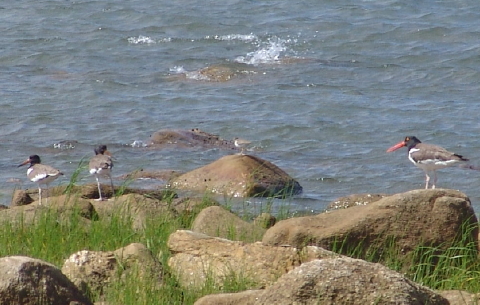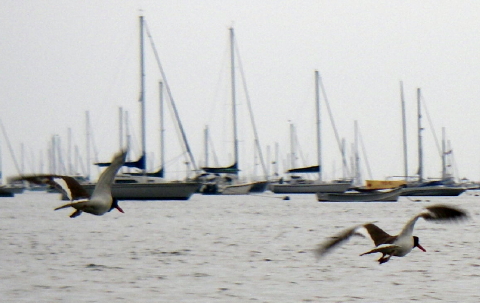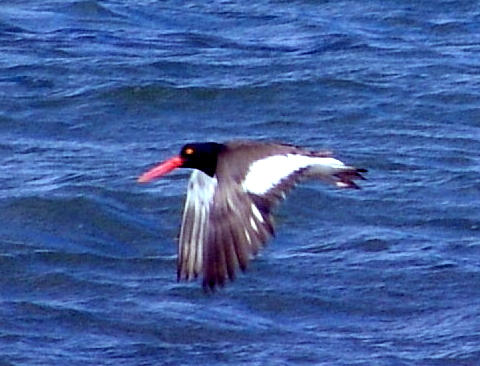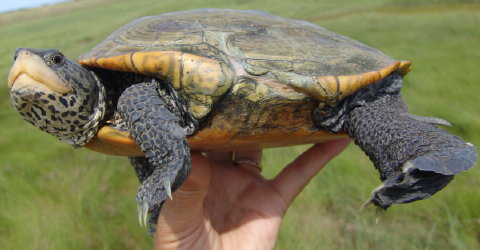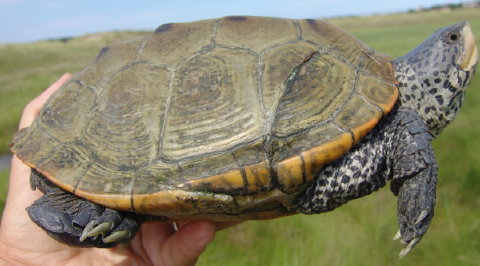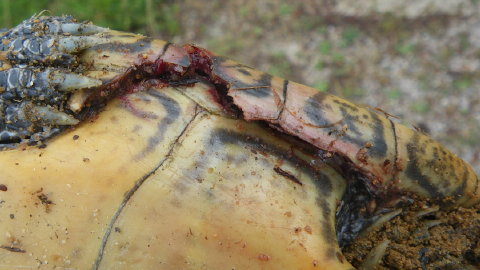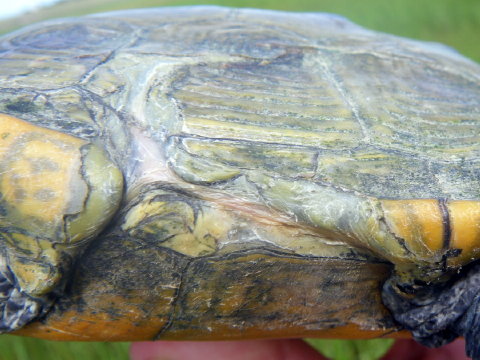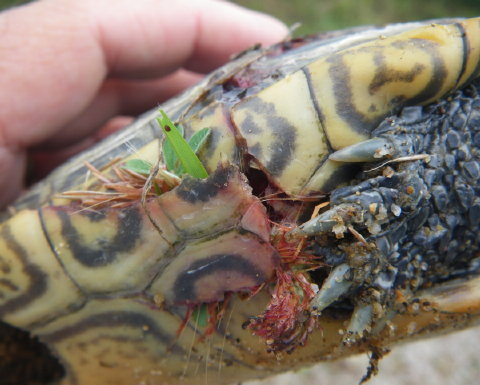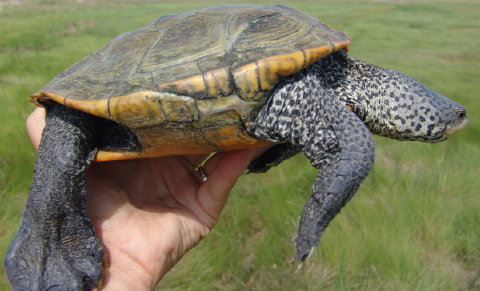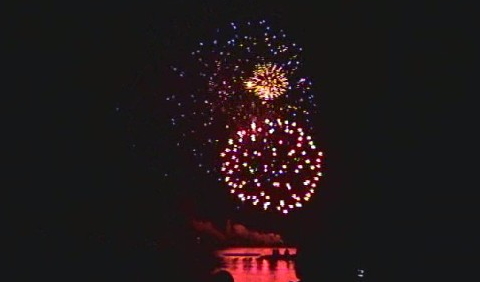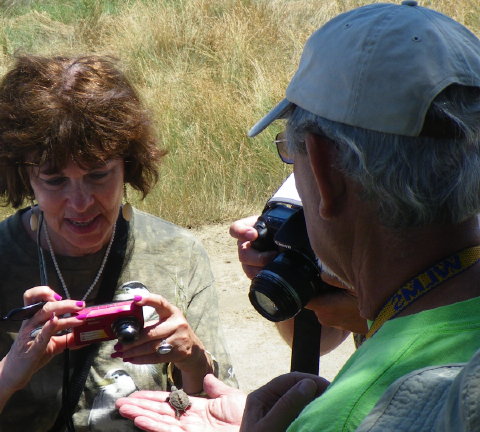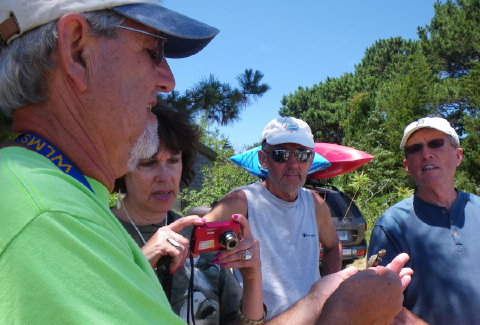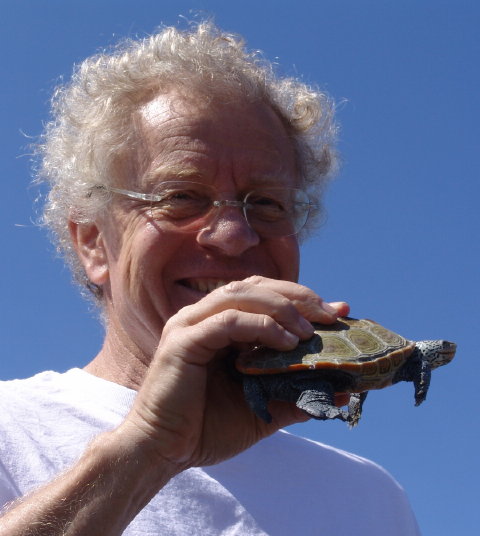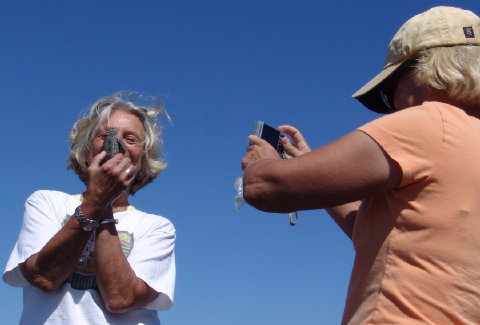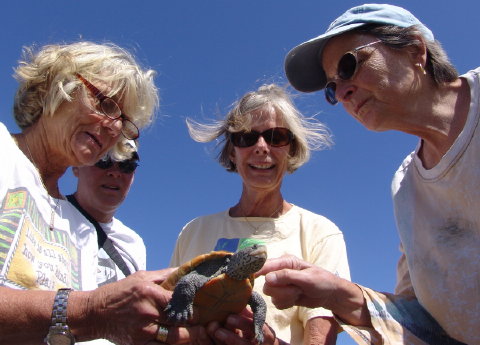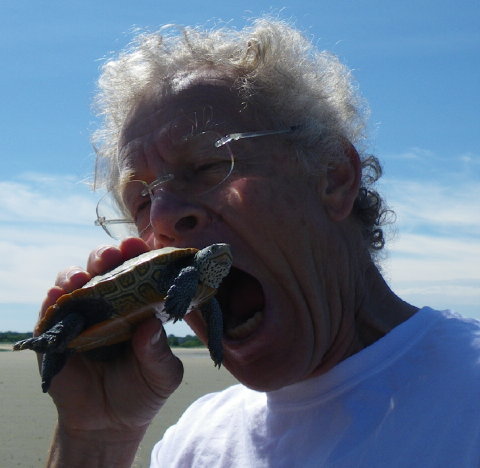American Oystercatcher, Stewarts Island, Sippican Harbor
American oystercatchers (Haematopus palliatus) with bright orange beaks and penetrating golden eyes offer an exquisite contrast to the browns and grays and greens of the coastal New England landscape. Nearly driven to extinction in the Northeast due to poaching and hunting, the species began to return to Massachusetts waters under the protection of the Migratory Bird Treaty, but populations remain uncomfortably low. Not covered by the federal Endangered Species Act, American oystercatchers depend on the protection of individual states, many of which list them as a species of special concern because of dwindling populations. Unfortunately, Massachusetts is not one of these states.
Banded Oystercatcher Pair, Gravel Island, Sippican Harbor
Massachusetts Audubon Society, through its Coastal Waterbird Program, monitors American oystercatchers, and Mass Audubon’s Wellfleet Bay Wildlife Sanctuary director Bob Prescott (rprescott@massaudubon.org) has taken a special interest in protecting these beautiful coastal birds. When nesting pairs are identified and located, Mass Audubon has installed symbolic fencing to protect the pair from unintended disturbance. Turtle Journal has observed breeding pairs on the Outer Cape and on the SouthCoast and notes that parents are extremely dedicated to and protective of their nests and their young.
Banded American Oystercatcher “W5” on Gravel Island
Turtle Journal has documented American oystercatchers on the SouthCoast for the last seven years coincident with our diamondback terrapin studies from Mount Hope Bay on the Rhode Island/Massachusetts border to the Cape Cod Canal. This summer, Sue Wieber Nourse discovered a breeding pair, including banded oystercatcher “W5” above, on rocky, salt marsh Gravel Island in Marion’s Sippican Harbor.
Four Oystercatchers, Stewarts Island, Sippican Harbor
A couple of weeks later, Sue found oystercatcher “W5” and three others foraging the tidal flats 1.75 miles to the south on Stewarts Island in Sippican Harbor.
Oystercatcher Juveniles with Parents, West Island
In August 2007, Turtle Journal’s Don Lewis (Don_Lewis@post.harvard.edu) Â documented two juvenile American oystercatchers with parents on the north shore of West Island in Fairhaven.
Oystercatcher Pair on Aucoot Cove Barrier Strip
Turtle Journal found another breeding pair of American oystercatchers on Aucoot Cove’s barrier strip in July 2007.
Oystercatcher Parents with Juvenile (Left), Aucoot Cove
Then, later in the summer, Turtle Journal discovered the oystercatcher parents foraging along the shoreline of Aucoot Cove with a juvenile.
American Oystercatchers Fly through Sippican Harbor
Sippican Harbor in Marion is an active sailing center with hundreds of yachts moored at anchor between Head of Harbor to the north and Ram Island in the south. Luckily, there are a number of small, gravelly marsh islands scattered through the estuary where pairs of osytercatchers can secret themselves away from the noise and the flutter of summer busy-ness. And while the SouthCoast can’t rival the Outer Cape for isolation, there remain a few spots like the north shoreline of West Island in Fairhaven where humans have trouble frequenting.
American Oystercatcher in Flight, Buzzards Bay
If you’d like to help restore American oystercatcher populations in coastal Massachusetts, let Turtle Journal know if you discover a breeding pair or have a sighting of these magnificent shorebirds. Our 24/7 hotline remains open at 508-274-5108. Of course, Massachusetts Audubon’s Wellfleet Bay Wildlife Sanctuary welcomes information on potential nesting sites and can be reached at 508-349-2615.




